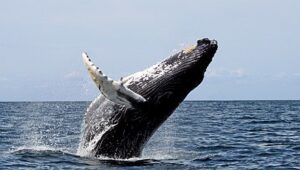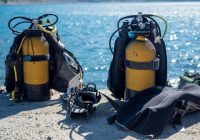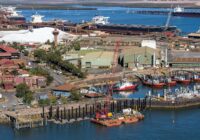It’s the time of year for extravagant tail-slapping displays and breathtaking breaches, as thousands of nature’s majestic giants hit the ‘humpback highway’ on their annual journey along Australia’s East coast.

After feeding in the icy Antarctic waters during the summer months, around 33,000 humpback whales make their way to the warmer waters of the Great Barrier Reef to mate, calve and socialise.
With the annual migration underway, Director of Field Management Strategy at the Great Barrier Reef Marine Park Authority Dr Mark Read is urging whale-watching enthusiasts and visitors to the Marine Park to keep a safe distance.
“These giants of the deep never cease to amaze, even for whale researchers or tourism operators who are lucky enough to interact with them each year,” Dr Read said.
“But given the growth in recreational vessel registrations and the popularity of commercial whale watching, it’s becoming increasingly important that people abide by approach distances.
“If you run into a 14 or 15-metre, 40 tonne whale, it’s likely your boat will come off second-best, and the whale could also be injured.”
With the number of humpback whales in the Marine Park growing each year, the best thing people can do to reduce the risk to the whales and to themselves is to ensure they keep a safe distance.
“The message is simple, be alert, watch out for whales and make sure you know the rules when you come across one,” Dr Read said.
- Legally, vessels must stay at least 100 metres from whales
- Vessels must stay at least 300 metres from whales in the Whitsunday Whale Protection Area, which was established for whales to socialise and for pregnant females to give birth in the many protected bays provided by the islands.
- Vessels must also stay at least 300 metres away from a whale calf anywhere in the Marine Park. Disturbing a calf may cause it to stop feeding and leave its mother, and this can be dangerous if the mother feels her calf is under threat.
- Jet skis must stay at least 300 metres away from the animal throughout the Marine Park.
- Drones are restricted to 300 metres height and approach distance to protect whales, and to respect others experience of the whales
- Reduce vessel speed to minimise the risk of collision in areas where whales have been sighted
- Be quiet when you are around a whale
- Don’t get in the water if you see a whale — the same distance requirements apply to people in the water, as to vessels
- If you are already in the water do not disturb, chase, or block the path of a whale and if possible, return to your vessel
- If there is a sudden change in whale behaviour, move away immediately.
Marine Park users can report whale sightings to the Reef Authority’s Sightings Network through the Eye on the Reef app, by emailing or calling (07) 4750 0788.
Sick, injured, stranded or dead whales can be reported to the Marine Stranding Hotline 1300 ANIMAL (That’s 1300 264 625)







